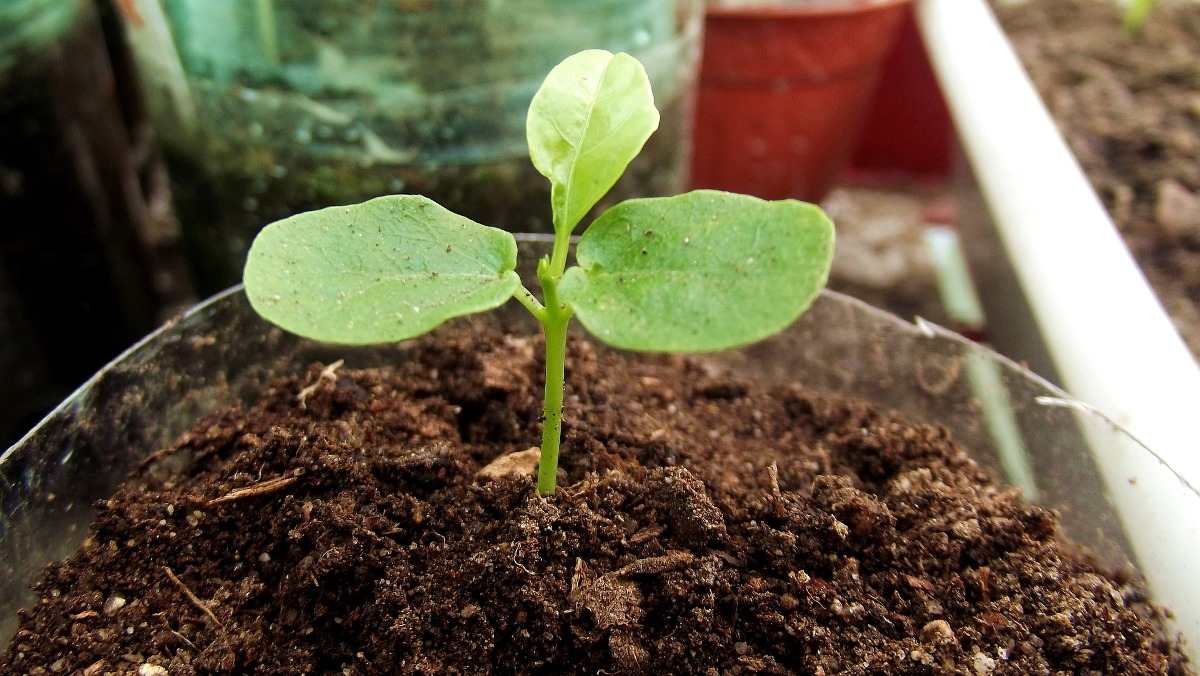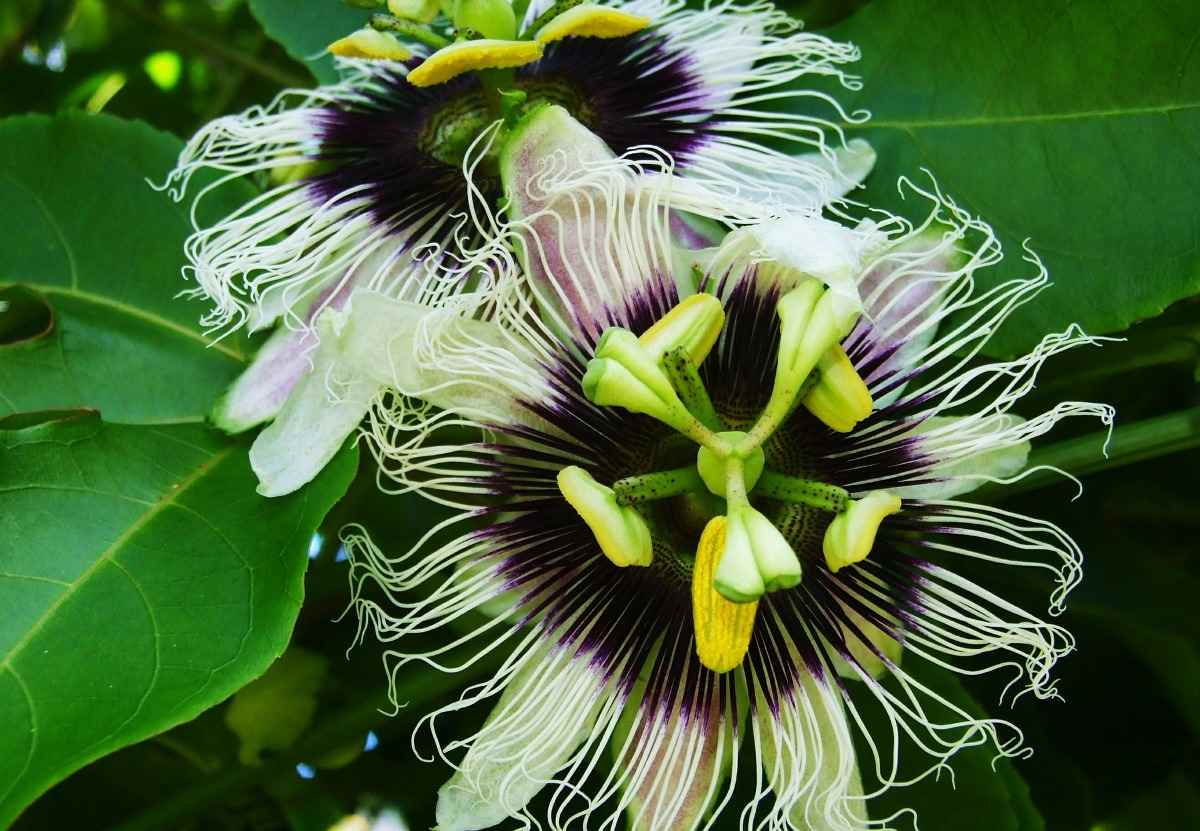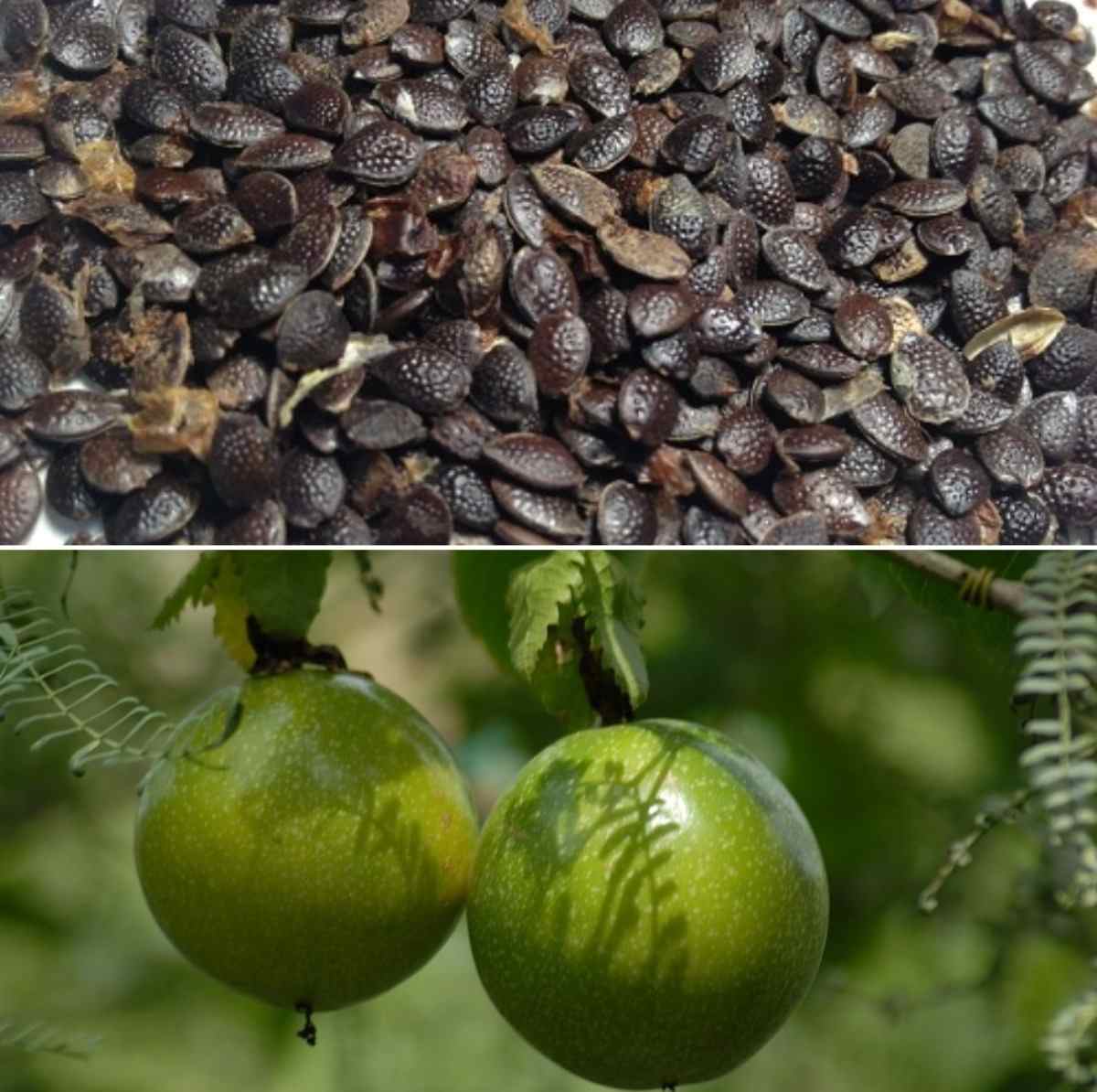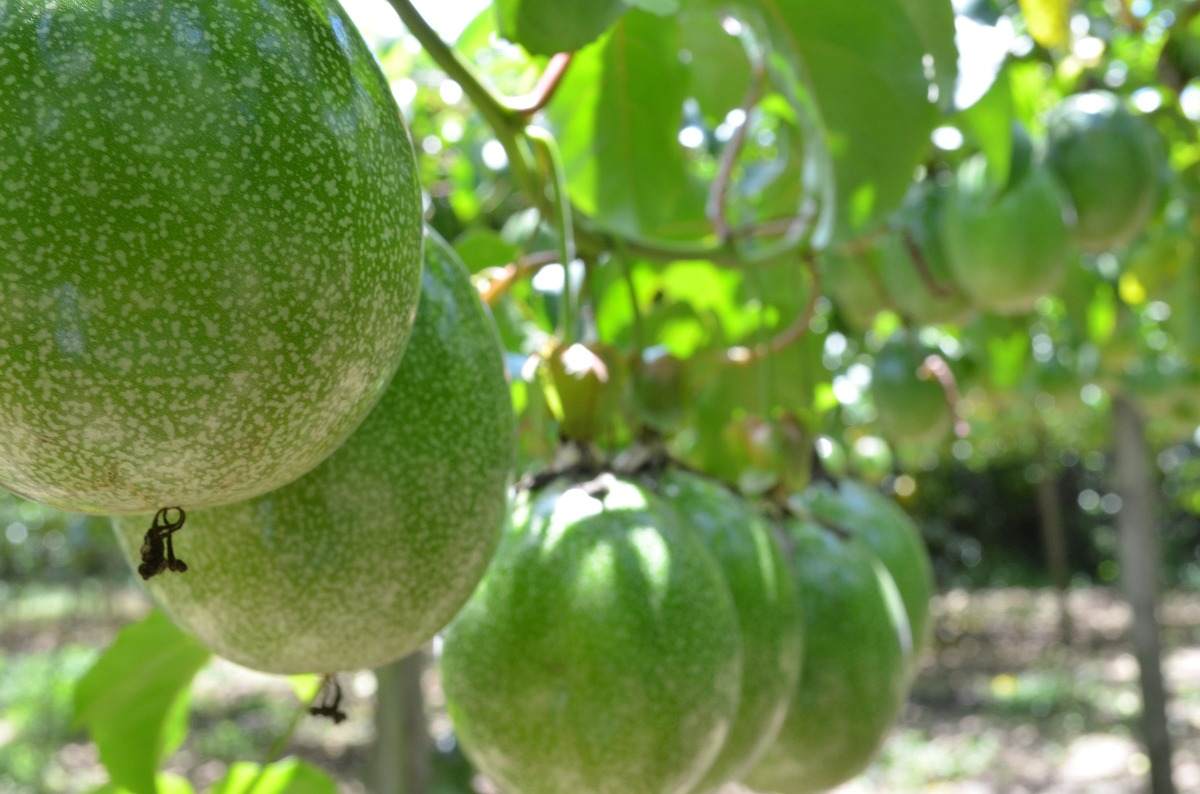Introduction to Passion fruit seed germination process: The Passion fruit is the fruit of several plants in the family Passiflora. Passion fruit is highly rich in Vitamin C, beta-cryptoxanthin and alpha-carotene that boosts immunity. It has iron which increases hemoglobin in red blood cells. The rich content of riboflavin (Vitamin B6) and niacin (Vitamin B3) in this fruit helps in regulating the thyroid activity in our body.
Passion fruit grows easily from seed. Most Passion fruit sold to gardeners are grafted onto disease-resistant rootstock but with good drainage, seed-grown plants can be vigorous and productive and not prone to suckering like the grafted ones.
In this article we also discuss below topics;
- Process of growing Passion fruit from seed
- Passion fruit seed germination conditions
- Time to take Passion fruit seeds take to germinate
- How do you germinate Passion fruit seeds
- Process for germinating Passion fruit seeds
- Passion fruit seed germination period
- Passion fruit seed germination temperature
- Paper towel germination method for growing Passion fruit
A step by step guide to Passion fruit seed germination process
Use fresh seeds
Freshly harvested Passion fruit seeds germinate very quickly, but older, dry seeds can take months to germinate if they grow at all.
A few days before you intend to plant the seed, and buy ripe Passion fruit from the store. Open it and collect at least 6 seeds. Spread the passion seeds out onto burlap and rub them until the juice sacs burst open.
Wash the passion seeds in water and allow them to dry for 3 to 4 days before washing them again and drying them in the shade.
If you plant the seeds immediately, they must germinate within 10 to 20 days. If you want to store the seeds, place them in airtight plastic bags and refrigerate them for up to 6 months.
Conditions for Passion fruit seed germination
For good growth and lots of fruit, plant vines in a sunny spot, frost-free spot and lavish them with care and attention. Passion fruit develops extensive root systems to fuel all that growth and fruit production, so allow plenty of room for roots to grow. Also, keep the surrounding area free of weeds. And also give the vine space to climb. One Passion fruit can reach at least 2.5 meters across and several meters high. An ideal spot to grow a vine is along a wire fence, across a balcony, or over a pergola where they give year-round shade. If you want to grow a vine along a sunny wall, install some wire, trellis or mesh as support for its tendrils.
You should not miss the Growing Carambola in Containers from Seed, Cuttings.

Keep the root system in mind when feeding a fruit vine. Spread the fertilizer and mulch over the entire root system, not just around the stem base. Passion fruit thrives on a diet of pelletized chicken manure or any fertilizer designed to encourage flowering and fruiting, such as citrus food. Apply fertilizer in spring and then every 4 weeks through summer. Always water well when applying fertilizer and it can take 12–18 months for a newly planted vine to reach fruiting size, although some flowers can be produced in summer or early autumn.
It is recommended to pretreat Passion seeds before planting. They contain a hard seed coat and are slow to sprout. There are various pretreatment methods, but the simplest is to soak the seeds for 24 to 48 hours in warm to the touch water, just before planting. Optionally, Passion fruit seeds can be lightly scarified with sandpaper to provide some permeation on the seed coat.
Once pretreated, plant seeds 1/2-1 inch deep in moist, sterile soil. Keep soil temperature consistent at 21 to 29°C, with some day/variation in this range. Cool soils will delay seed germination time if not inhibit germination altogether. Standard room temperature can be too cool for proper seed germination.
Passion fruit plant propagation
Passion fruit vines are generally grown from seeds. With the yellow form, seedling variation provides cross-pollination and will help overcome the problem of self-sterility. Some say that the fruits must be stored for a week or two to allow them to shrivel and become perfectly ripe before seeds are extracted. If planted soon after removal from the fruit, seeds will germinate in about 2 to 3 weeks. Cleaned and stored seeds have a lower and slower rate of seed germination. Sprouting can be hastened by allowing the pulp to ferment for a few days before separating the seeds, or by chipping the seeds or rubbing those with fine sandpaper. Seed soaking, often recommended, has not proved helpful. Seeds are planted 1/2 in (1.25 cm) deep in beds, and seedlings can be transplanted when 10 in (25 cm) high. If taller up to 3 ft (.9 in) the tops must be cut back and the plants heavily watered.
Passion fruit tree pollination

Purple Passion fruit plants are self-pollinating and yellow Passion fruit plants are not self-pollinating. They mainly depend on insects to transfer pollen from one plant to the next for pollination. The carpenter bee is the most effective fruit pollinator. Then the pollen is heavy and sticky making pollination by honeybees difficult.
Spacing of passion fruit plants
Passion fruits are vigorous growers and one vining plant can grow 30 to 40 feet. Train vines up to avoid stems of separate plants tangling and training vines on a trellis will make fruit harvest easier.
Process of growing Passion fruit from seed
In case if you miss this: Persimmon Seed Germination Period, Temperature.

Save the seeds
Keep a few seeds from a large tasty Passion fruit and gently wash the seed clean removing the pulp then allow it to dry on a paper towel. Fresh seed is more viable than older seed. Seeds are best planted in spring or early summer as soon as they are obtainable. If fruit seed has to be stored keep it in a labeled envelop in an airtight container.
Sow the seed
Sow the seed into a pot or container filled with seed raising mix. Seeds can be sown in a small (10cm) pot with 1 to 2 seeds per pot or into punnets. Then, moisten the mix before sowing the seed. Put the seed on the mix and lightly cover it with the seed raising mix. After seed sowing, waterpots with a seaweed solution.
Place the seeds about 1⁄2 inch (1.3 cm) apart from one another inside each furrow. Protect the seeds by covering them with a very thin layer of the soil mixture. Immediately water after planting the seeds and moisten the soil, but do not drench it. After planting the Passion fruit seeds, all you need to do is provide an occasional sprinkle of water when the surface of the soil dries out.
Keep warm
Keep the pots warm either in a glasshouse or put them in a foam box covered with a sheet of glass or plastic to form a mini glasshouse. Then, keep the box in a warm well-lit spot but not in direct sunlight.
Keep moist
Mist the potting mix then it doesn’t dry out. Germination generally takes around 10 to 21 days when conditions are warm and seed is fresh.
Prepare a nursery container
Ideally, you should start Passion fruit vines in a separate, protected container and later transplant them to a prepared garden spot. Select a container that is no larger than 3 square feet (0.28 m2). Then, fill the container with a soil mixture made from equal parts compost, topsoil, and coarse sand. Fill the container with about 4 inches (10 cm) of this mixture.
To grow Passion fruit indoors is quite simple. Use a pot that is about 12 x 12 inches and fill it with high-quality potting soil. Use a trellis so the vine of the plant can grow up and around it, get your plant at least 4 hours of sunlight daily and watch your new houseplant thrive.
Feed and water for fruit growth
Keep these hungry vines weed-free, well-watered (especially when there’s little rain) and fed from spring to autumn. Then, use pelletized flower and fruit, a citrus food fertilizer. Water plants well before adding fertilizer then spread it around the base of the stem and along the area where the plant roots are growing. After feeding in spring, spread organic mulch such as compost or aged cow manure about 2 to 3 centimeters deep. Don’t let it build up against the stem and don’t dig it in as this could encourage suckering.
Transplant the seedlings
When the seedlings grow to a height of 8 to 10 inches (20–25 cm), they are ready to be transplanted into a permanent location in your garden. When the seedling is 5cm high, water with liquid plant food. Repeat the fertilizer application every 14 days. At this point, if the weather is warm, the pot can be moved into a sheltered but sunny spot. Outside it will need frequent watering as it will dry out quicker than in the sheltered glasshouse.
Passion fruit seed germination by paper towel method
Split opens the Passion fruit with a sharp knife and scoops out the seeds, with a spoon. Once collected 10 seeds, rinse them under a warm tap until all traces of the fruit’s sticky red flesh are gone. Carefully pat the Passion fruit seeds dry with paper towels before allowing them to dry completely on a layer of tissue paper.
Fill a pot that’s 4 inches across and has drainage holes with all-purpose compost. Then, moisten the compost until water drains from the holes. Press each of the dry seeds into the compost and cover each with a thin layer of compost.
Then, lower the pot into a large zippered plastic storage bag. Seal the bag and set it in a warm space, such as kitchen windowsill. Do not allow the compost to dry and monitor the seeds until they germinate, which generally takes two to three weeks.
Plant the individual passion vine seedlings in about 3-inch pots filled with the same multipurpose compost. Dig a hole about 1 to 1 1/2 inches deep before lowering the seedling and backfilling with the original medium. Maintain evenly moist soil and transplant the seedlings when they reach a height of about 10 inches. Passion vines thrive in well-drained soil with a pH level of 6.5 to 7.5, and full sunlight to partial shade.
Passion fruit tree problems and control
Passion fruit is susceptible to attack by many insect pests and diseases.
Nematodes can attack plant roots; there is no cure for infected plants; solarize the soil when possible.
Snails will feed on foliage; use beer traps and overturned citrus rinds to attract and catch snails.
Fusarium fungal disease can cause foliage dieback; remove infected foliage; space plants well apart to encourage air circulation.
Some questions about Passion fruit seed germination, passion fruit tree
You should not miss the Kale Seed Germination, Temperature, Time, Process.

Why your Passion fruit leaves are going yellow?
The most common cause for Passion fruit leaves are going yellow is woodiness virus, but it could also be down to magnesium or nitrogen deficiency, or “winter yellows” brought on by cold, windy weather.
How long after flowering does Passion fruit appear?
The yellow passion flower blooms April to November and the purple passion flowers in March through April. Fruits can be expected to ripen about 70 to 80 days after pollination. This means Passion fruit harvest time is the end of summer into fall for purple vines and maybe through winter for the yellow form.
Why is Passion fruit vine not producing fruit?
You can expect Passion fruit about 18 months after planting. If your vine is not fruiting after this time, it can be due to one of the following reasons. Passion fruit vines are heavy feeders and require plenty of water. A dry plant will not produce fruit, ensure the soil is moist. Over-fertilizing results in flowers but no fruit. Passion fruit usually needs fertilizing twice a year, after pruning and again after fruiting.
A fertilizer high in nitrogen promotes plenty of passion tree leaf growth at the expense of fruit. Then, fertilize with compost, citrus foods, chicken manure, or well-rotted cow manure. You can even put used teabags at the base of established vines, and leaving them to seep into the soil as fertilizer. Passion fruit requires at least 5 hours of direct sunshine a day. They must be planted in a sunny spot with no trees or competitive roots. Make sure you are pruning your vine correctly.
How much light does Passion fruit require?
Passionflower vines do like the sun then the more direct sunlight you can get your plant the better. Passion fruit will grow just fine as long as you get it at least 4 hours of direct sunlight every day; you should easily be able to achieve this if you have a south-facing or west-facing window. If you will struggle to get enough light then you can always top up the light with an affordable LED grow lamp as the more light it gets means the more fruit it will produce.
Should grow a Passion fruit from seed or buy a young seedling?
Whilst Passion fruit can be propagated by cuttings the best idea is to propagate them from seed. It can take up to about 19 months for a Passion fruit vine to become mature enough to produce fruit. If you are growing passion flower vine so you can eat the homegrown fruits you might want to grow your plant from a seedling as this shortens the time you will have to wait for the Passion fruit to be produced.
What sort of pot should use for passion fruit?
You should select a pot that is as big as possible for the space you have, use a 12×12 inch pot. Though the actual vine is fairly small the passion flower plant does have a fairly large root system. Make sure the pot or container you use has drainage holes in the bottom as if the roots of a Passion fruit vine are in standing water they will rot and the plant will die. You will have to figure out or buy some sort of trellis system for the vine to grow up and around for the best results as the vine can grow about 15 feet in a season.
Conclusion of growing Passion fruit from seed
Growing Passion fruit is commercially viable and profitable. You may also like Almond Seed Germination, Time, Temperature.
How to germinate passion fruit seeds